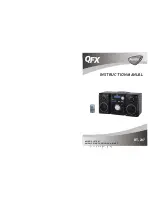
Troubleshooting
System
When a problem occurs, do as follows:
4
Examine the system. For example, examine:
–
The LEDs on the devices.
–
The condition messages of the devices.
4
Write down your findings. When you write down your findings, you can give an
explanation of your findings to other persons (for example, service engineers).
From our experience and based on data from our repair centres we know that problems on
site are often related to the application and not to the performance of the unit(s) individually.
It is therefore important that this Installation and Operation manual and the Release notes are
read. This will save you time and helps us deploying the quality of Bosch products.
Tip: Make sure you always use the last released software version at an installation.
At bigger systems it is easy to get totally absorbed by the total quantity of units and the
possibilities. A step-by-step approach of the smallest possible working system which includes
the troubled unit is advisable. The used cabling and connections should not be the integrated
cables of the building, but proofed cables with short lengths.
Optical network problems
Make sure that the maximum number of nodes, in combination with cable length, is according
the system limits and the bend radius of the optical cable is not too tight. Refer to Optical
network design, page 77.
The network status could be found on the CCU display information:
–
Navigate with the rotary switch to the faults (1 for the AEX and 4 for the CCU) press for 5
seconds on the rotary button and navigate to network faults.
Sub menu A is the optical connection information: Redundant (ring), not-redundant
(“branch”, the last unit connected will show “end of Branch”) with this you can check if
the optical cable is ok.
Example: in case the system is connected redundant and the menu shows “branch”' please
check the optical cables.
The menu will also show the logging of network related errors (In this menu the error count
can be set to “0”):
–
Connecting or disconnection will log a network error. In case the counter rises without
frequency, then there could be a problem related to the optical connections:
LE: (Lock error) registration of a network change or build up. The counter can go up by
connecting units into the optical chain, by a reset of a unit or when switching a unit on.
RE: (regeneration error) registration of a corrupted data which has been recovered
(corrected) by the CRC (data check code). The counter could go up by bad or too long
cables (in combination with too many nodes) or by a bad performing unit.
BE: (Bit error) registration of a corrupted data which couldn't be recovered by the CRC.
Tip: Do not use cable binders.
9
9.1
Conference System
Troubleshooting | en 259
Bosch Security Systems B.V.
Operation Manual
2013.11 | V2.0 | DCN-NG_OM_V4.x
Summary of Contents for DCN Next Generation
Page 1: ...Conference System DCN Next Generation en Operation Manual ...
Page 2: ......
Page 288: ......
Page 289: ......
















































